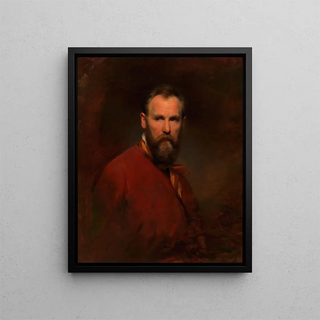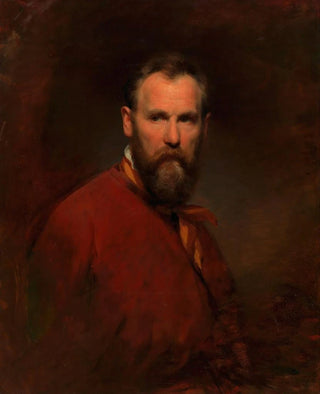Art print | Self-portrait by Friedrich von Amerling - Friedrich von Amerling


View from behind

Frame (optional)
Friedrich von Amerling Self-Portrait Art print - Friedrich von Amerling – Captivating Introduction
The Friedrich von Amerling Self-Portrait, an iconic work of the 19th century, offers a window into the soul of an artist whose talent left a mark on his era. This painting, created with meticulous precision, invites viewers to delve into the inner universe of the artist. By depicting himself, Amerling does not merely capture his physical appearance but also reveals a part of his personality, his aspirations, and his time. The light, gaze, and details of this portrait demonstrate a technical mastery that transcends mere stylistic exercise to become a true artistic statement.
Style and uniqueness of the work
The Self-Portrait stands out for its striking realism, characteristic of the Romantic movement of which Amerling is a representative. The brightness of the colors and the finesse of the details attest to exceptional craftsmanship. Every brushstroke seems charged with emotion, and every shadow and reflection is carefully considered to create an intimate atmosphere. Amerling aims not only to reproduce his image but to evoke a sensation, to share a unique visual experience. His gaze, both introspective and engaging, captures attention and invites deep contemplation. This painting thus presents itself as an exploration of identity, a reflection on the human condition, while remaining rooted in a pictorial style that echoes the aesthetic concerns of his time.
The artist and his influence
Friedrich von Amerling, born in 1803 in Vienna, was an Austrian painter whose work was shaped by the influences of his era, but also by his travels across Europe. Trained at the Vienna Academy of Fine Arts, he quickly established himself as a renowned portraitist, capturing not only faces but also the personalities of his subjects. His style, at the crossroads of Romanticism and Realism, influenced many contemporary and later artists. Amerling successfully integrated elements of daily life into his works, making his subjects accessible and close to the public. His Self-Portrait, in particular, illustrates this ability to combine technique and emotion and continues to inspire generations of artists seeking

Matte finish

View from behind

Frame (optional)
Friedrich von Amerling Self-Portrait Art print - Friedrich von Amerling – Captivating Introduction
The Friedrich von Amerling Self-Portrait, an iconic work of the 19th century, offers a window into the soul of an artist whose talent left a mark on his era. This painting, created with meticulous precision, invites viewers to delve into the inner universe of the artist. By depicting himself, Amerling does not merely capture his physical appearance but also reveals a part of his personality, his aspirations, and his time. The light, gaze, and details of this portrait demonstrate a technical mastery that transcends mere stylistic exercise to become a true artistic statement.
Style and uniqueness of the work
The Self-Portrait stands out for its striking realism, characteristic of the Romantic movement of which Amerling is a representative. The brightness of the colors and the finesse of the details attest to exceptional craftsmanship. Every brushstroke seems charged with emotion, and every shadow and reflection is carefully considered to create an intimate atmosphere. Amerling aims not only to reproduce his image but to evoke a sensation, to share a unique visual experience. His gaze, both introspective and engaging, captures attention and invites deep contemplation. This painting thus presents itself as an exploration of identity, a reflection on the human condition, while remaining rooted in a pictorial style that echoes the aesthetic concerns of his time.
The artist and his influence
Friedrich von Amerling, born in 1803 in Vienna, was an Austrian painter whose work was shaped by the influences of his era, but also by his travels across Europe. Trained at the Vienna Academy of Fine Arts, he quickly established himself as a renowned portraitist, capturing not only faces but also the personalities of his subjects. His style, at the crossroads of Romanticism and Realism, influenced many contemporary and later artists. Amerling successfully integrated elements of daily life into his works, making his subjects accessible and close to the public. His Self-Portrait, in particular, illustrates this ability to combine technique and emotion and continues to inspire generations of artists seeking






